If you already know what a soundboard is, you want Farrago from long-time audio application vendors Rogue Amoeba
Soundboard software is not a big market. Even if you are exactly the person Rogue Amoeba's Farrago 1.0.0 is aimed at, you might not know the term soundboard. You will, though, immediately see what it does: Farrago gives you a screen that controls every piece of audio in your podcast, radio show, or theater program.
You've seen crew at the back of theaters or concerts with a mixing desk and a glowing Apple logo or two. They're making sure the sound is right but they can also be inserting music or effects into the audio.
With Farrago, they can have a Sound Set for their current show. Every piece of music, every effect from a thunderclap to a door opening, all arranged on their screen. Click on one to play it.
Or, you've heard podcasts where they play in a clip of, say, Steve Jobs saying something profound. Farrago lets podcasters have a Sound Set of everything needed for a particular show or episode and then click to play that clip. Click to play the show's theme. Click to play in a sponsor advertisement.
Then for tomorrow's podcasts or tonight's other show in the next theater, Farrago lets you have a separate Sound Set with all you need for that.
The audio can be MP3, Windows Media Audio, FLAC or more. If you drag a video into Farrago, it will add its audio to your collection.
Farrago doesn't record anything and really it doesn't do anything that you couldn't already with any collection of sounds with a bunch of QuickTime Player windows. But, instead of cascading windows, when you've prepared your audio clips, Farrago makes them all immediately available at a click or keystroke. Click to run any of them at any time or for precise cuing of a door opening as an actor walks on to the set, or tap a key.
It also lets you loop some of your clips so if you have music that plays underneath an announcement on your podcast, what's called a bed, then you can just let Farrago repeat it until you're finished.
Farrago lets you adjust the sound level of any clip, it lets you choose to play just an excerpt from the middle. Then it lets you control how the sound fades in and out.
Farrago is a remarkably clear and visual way to control a myriad of sounds, quickly.
There are things it could do better. You can have all these different Sound Sets but creating them takes a step or two more than you'd expect, for instance. You have to create a new one and then afterwards rename it from "Sound Set" to "Matinee Performance" or whatever you need. You can't just name it as you set it up.
While you can drag the sounds around to rearrange them in any order, drag and drop shuffles all the sounds around like when you're moving apps on iOS. Yet, you can't drag from one Sound Set to another, you have to Copy and Paste.
It would be good if each Sound Set were its own separate silo: if you could only play sounds in that set. We had a problem tracking down where a music track was coming from when we couldn't see it in our set: we'd inadvertently clicked it in another.
It would be great to see a finer editor for audio, too. Right now if you drag in, say, a one-minute audio and just want to play the middle ten seconds, Farrago makes that easy. If you drag in a half hour audio and want to play two minutes from the middle, it's impossible to be accurate enough.
To be fair, if you're preparing the audio for any kind of show then you should be making edits before you add things to Farrago. The editing that Farrago lets you do is basic last-minute stuff and Rogue Amoeba sells full audio editing with its separate Fission app.
Rogue Amoeba sells eight different audio apps and they're all best in class - its Audio Hijack is used by nearly every Mac-produced podcast you've ever heard in one way or another, AppleInsider Podcast included. Farrago fits in well with them but it also shines brightest when you already have some of the others.
For instance, if you are using Skype to record a podcast conversation with someone and want to play sound clips so that they can hear them too, you need the company's Loopback app which we looked at in a previous life. If you want to record that conversation then Audio Hijack is so good at the job as to be practically mandatory.
Setting up Farrago, Loopback and Audio Hijack to all work together takes some thinking and some reading of the Farrago documentation. Yet that documentation is good and the end result is excellent.
There have been similar apps for the Mac such as Soundboard from Ambrosia but that hasn't been updated since 2013. Then for its events, Apple uses a system which incorporates aspects of what Farrago does in a combination of hardware and software from MOTU — and does much more. MOTU's software alone costs $499 — and can get more expensive, quickly.
So, Farrago is the most up to date and most affordable soundboard for clip play-back for the Mac, without resorting to a larger application with features you may not want, or need. Those are two good reasons to buy — it but the much better reason is just that it is excellent, assuming you need that specific functionality.
Not very many people in the world are going to need Farrago: a pie chart showing Farrago users and Microsoft Word users would be one solid color for Word with the tiniest of lines somewhere. Yet if you're in that line, Farrago solves a problem and does it so well that you'll be glad you bought it.
Farrago 1.0.0 is available directly from the makers for $49 but for a short launch period it's on sale for $39. It requires a Mac running macOS 10.10 or newer, and, presumably, your own sound library to fill it up.
 Mike Wuerthele and William Gallagher
Mike Wuerthele and William Gallagher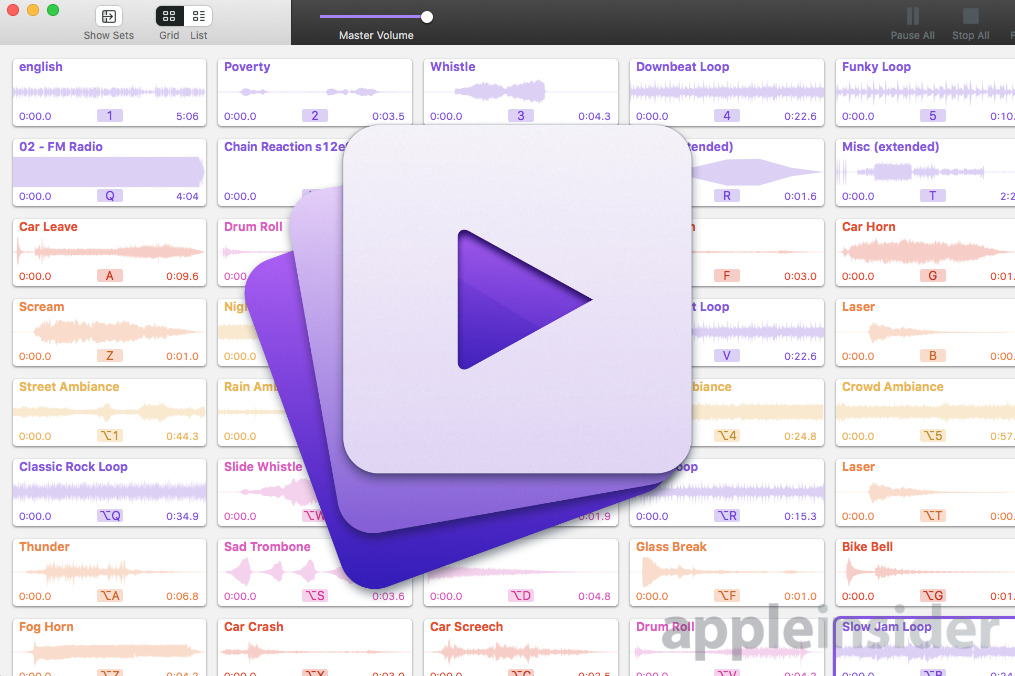
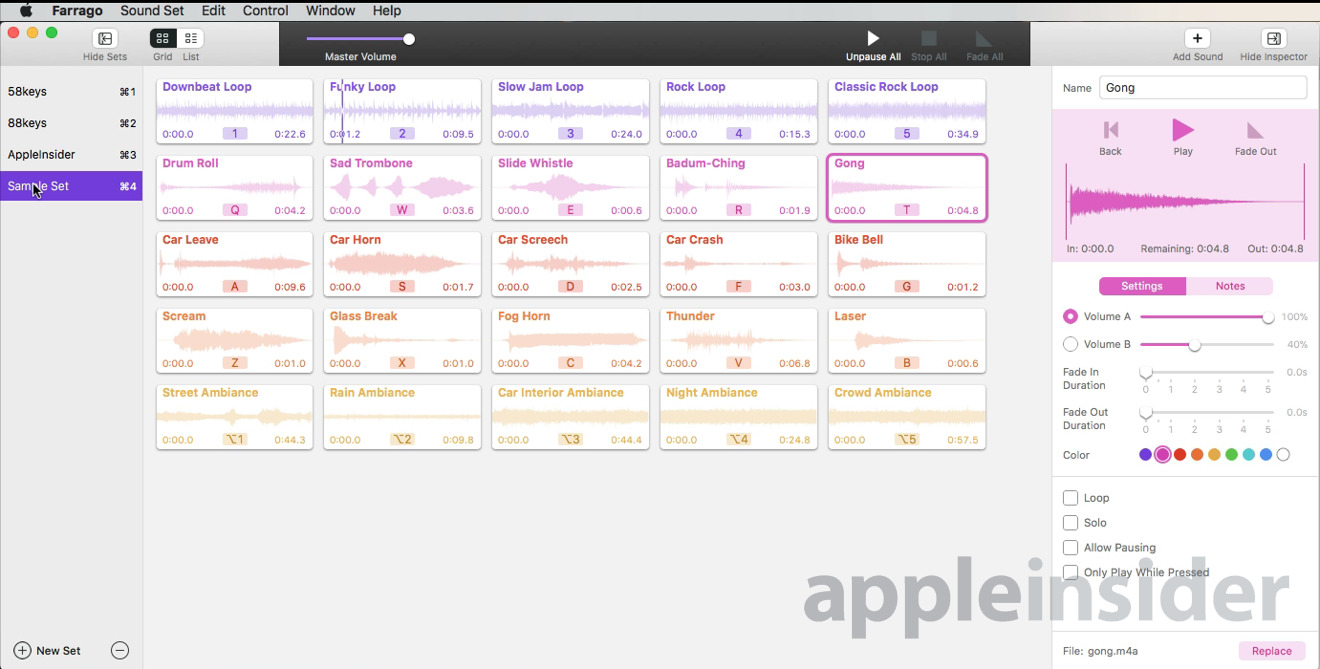
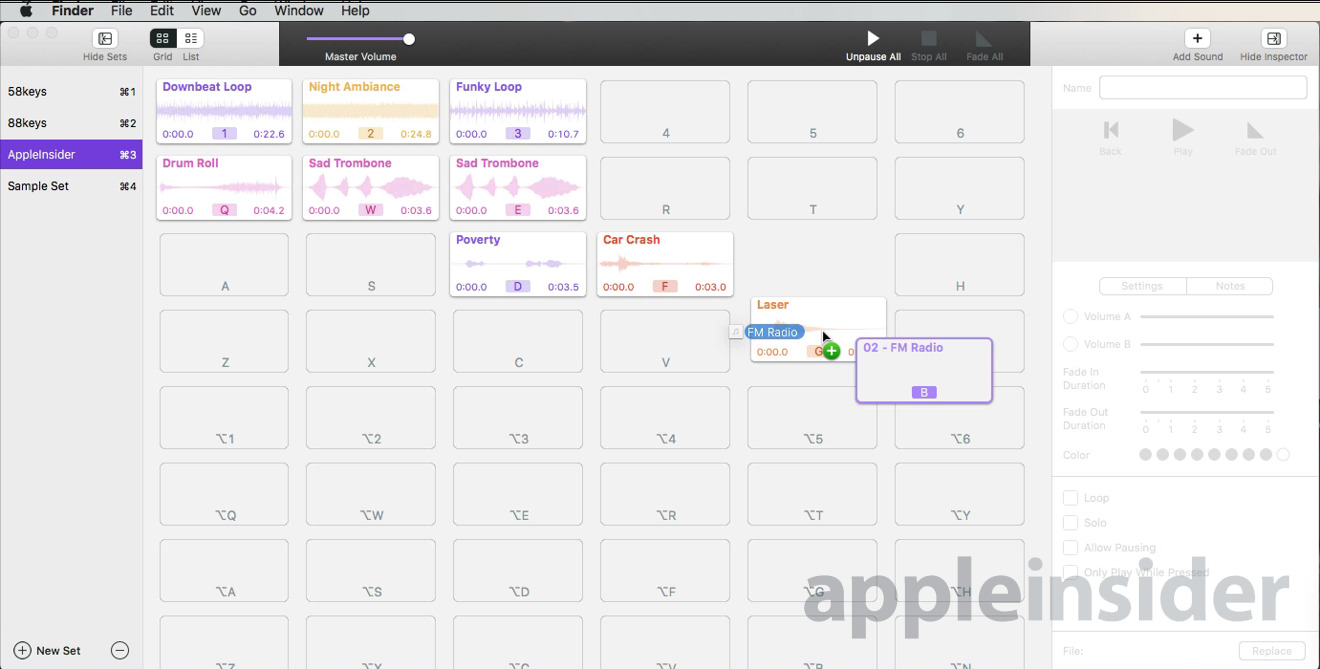
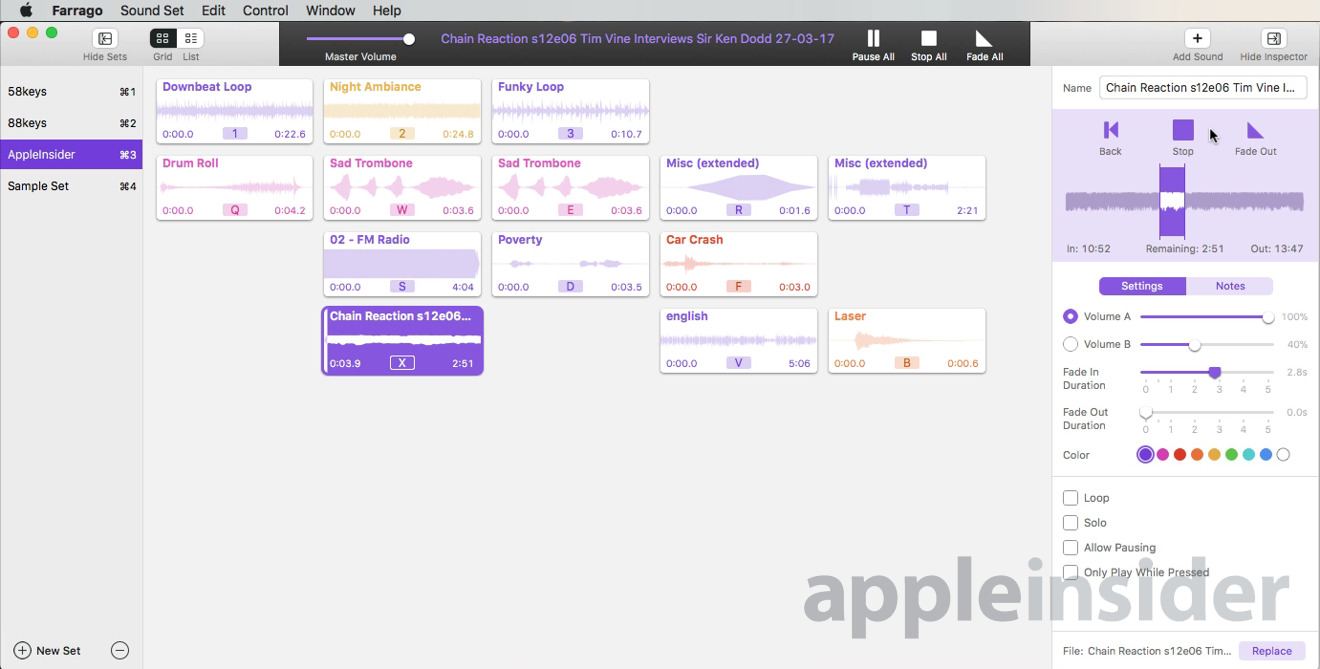
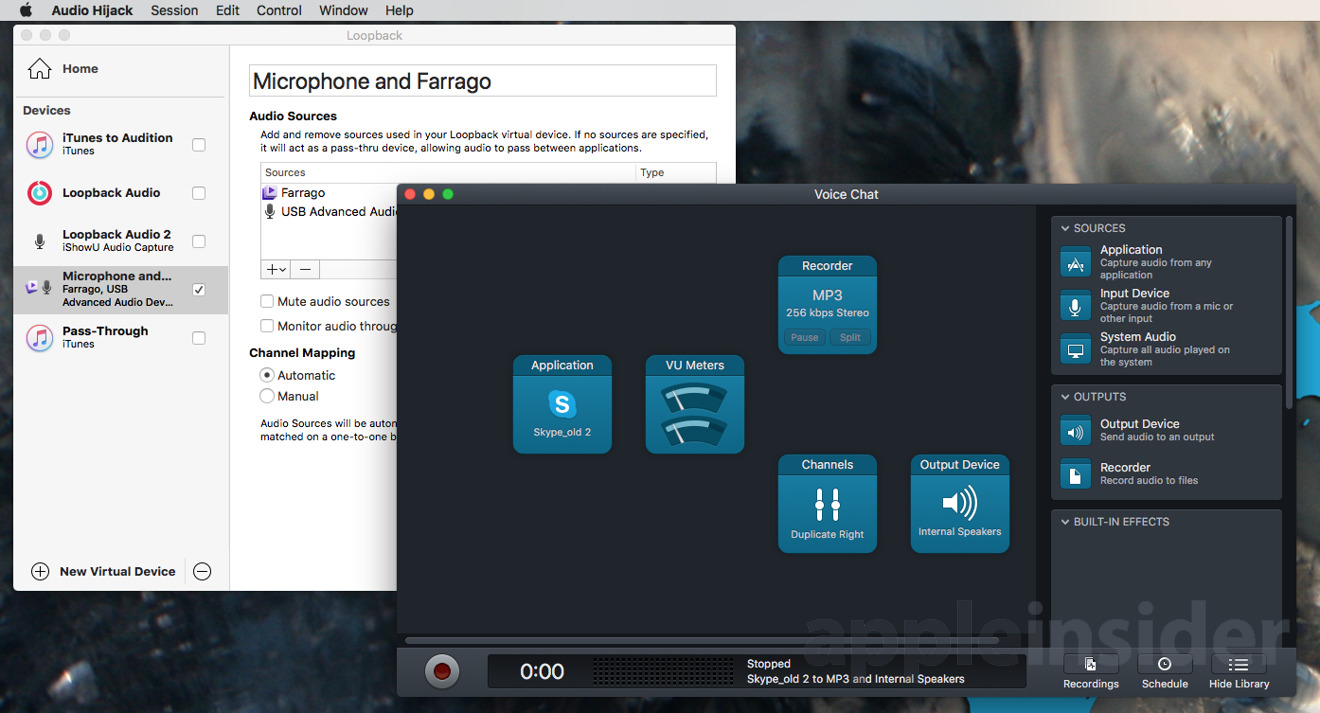







-m.jpg)






 Malcolm Owen
Malcolm Owen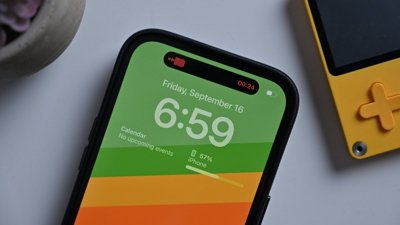
 Marko Zivkovic
Marko Zivkovic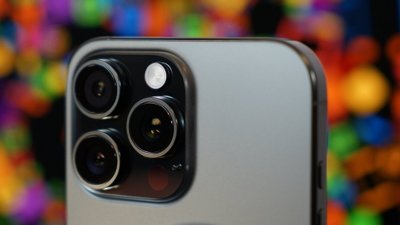
 Wesley Hilliard
Wesley Hilliard
 Christine McKee
Christine McKee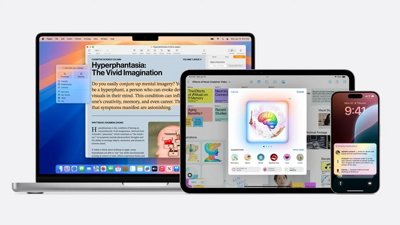

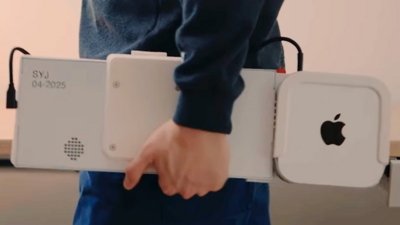
 William Gallagher
William Gallagher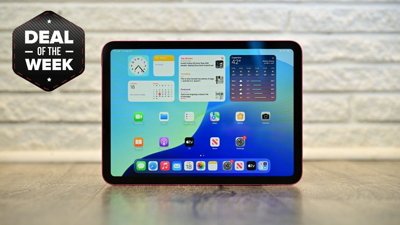

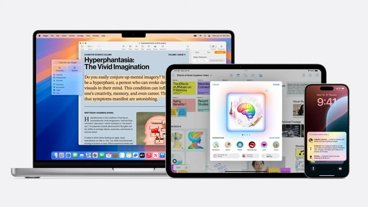



-m.jpg)



13 Comments
I see absolutely no value in this proposition. One can write a serious of Services to manage this features.
This looks like a great piece of software and something I will be recommending to people. My issue is when the article says -
”Then for its events, Apple uses a soundboard system which is a
The Motu system linked to doesn’t do what this software does... at all. While they are both called “soundboard” this comes down to a vernacular difference between two close, but not quite the same, sections of audio users/professions. In the podcast realm “soundboard” can be what this software is. In the live sound/theatre world, the Motu system linked to in the article is a soundboard/mixing console, but the system by Motu, or other brands, is for controlling levels/eq/dynamics from a live sound performance, not tracks being played back from files. Motu does also have editing software (Digital Performer), that would be closer to Logic Pro (Apple), or Pro Tools (Avid), it still isn’t what Farrago does (think really high end Garage band).
In the theater world, the audio output of the hardware running Farrago would be plugged into the “soundboard”, or “mixing console”, to be mixed with the other audio elements (microphones, other sound effects, etc.)